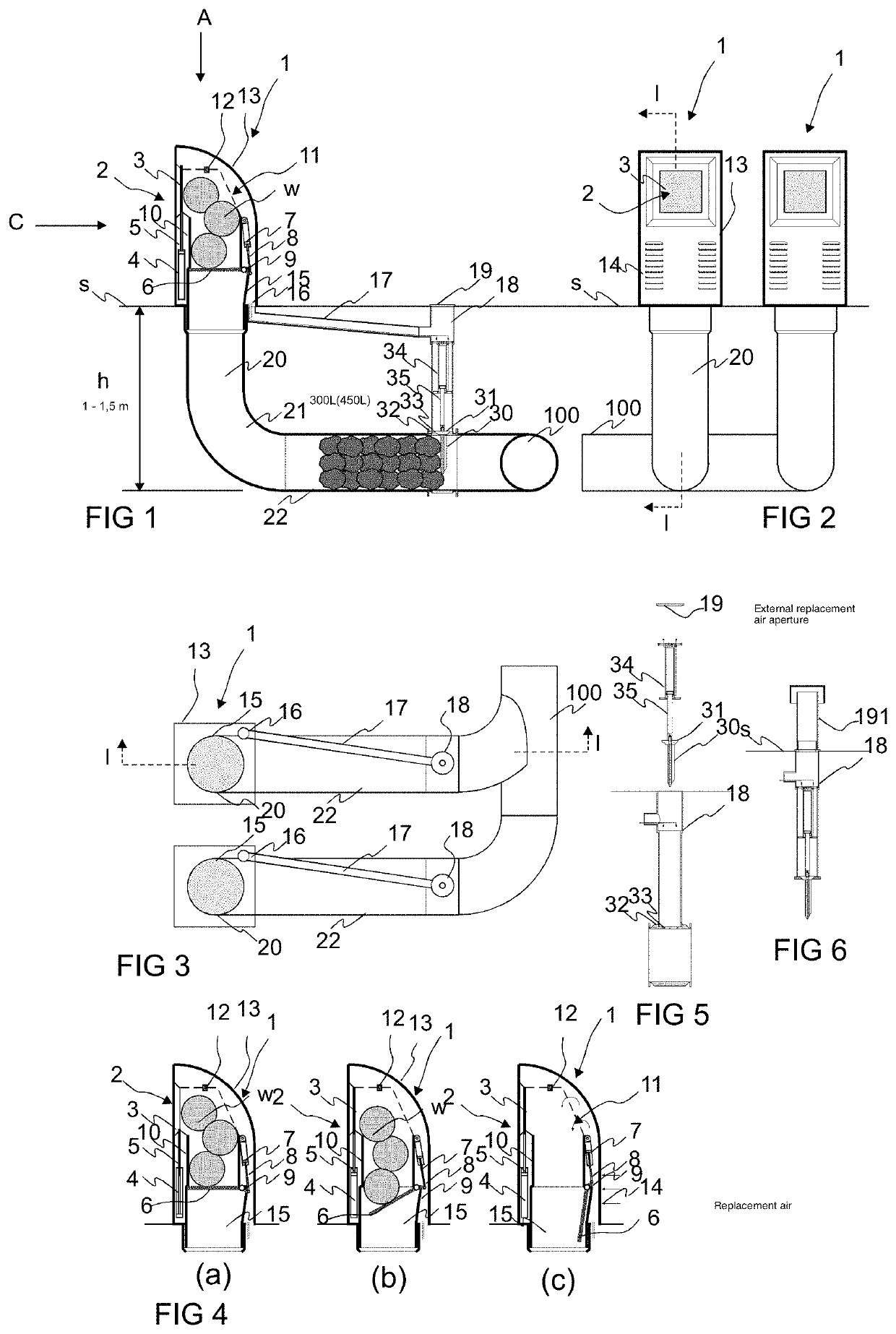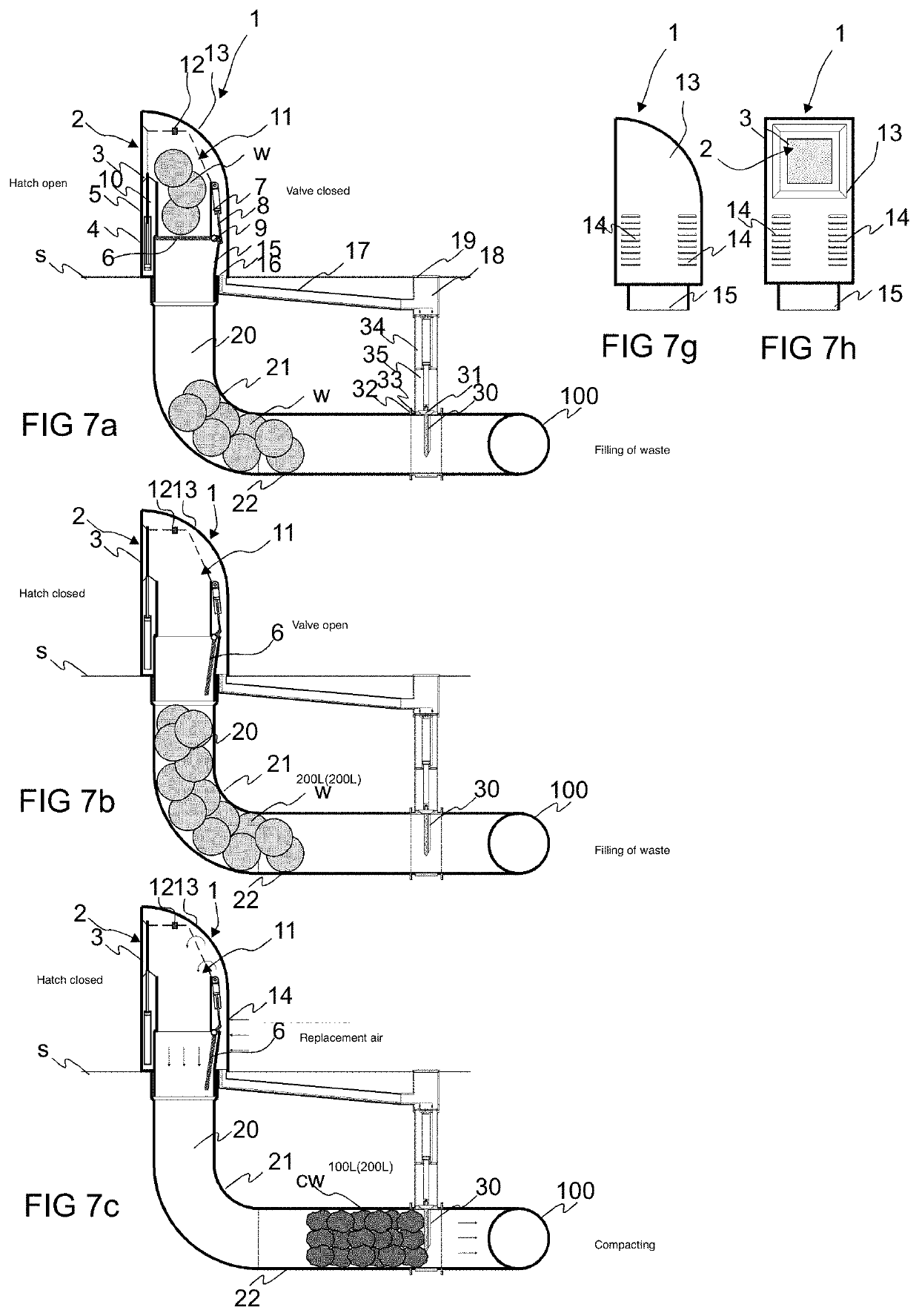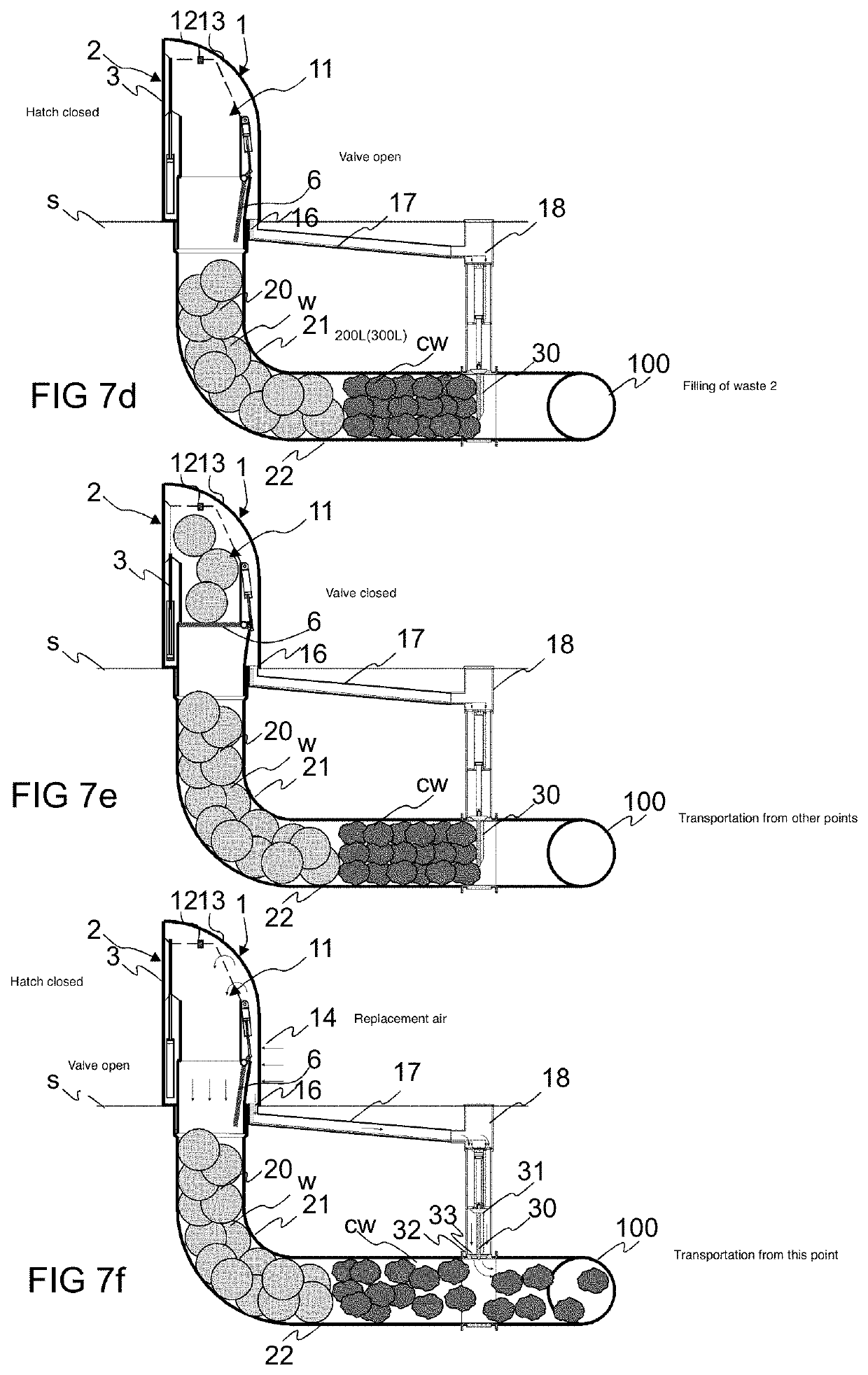Method and apparatus for feeding in and handling waste material
a technology for feeding applied in the field of feeding in and handling waste materials, can solve the problems of high excavation costs, and large space requirements of intermediate containers, and achieve the effects of reducing energy consumption of conveying systems, increasing the capacity of input points, and increasing was
- Summary
- Abstract
- Description
- Claims
- Application Information
AI Technical Summary
Benefits of technology
Problems solved by technology
Method used
Image
Examples
Embodiment Construction
[0036]FIGS. 1, 2 and 3 present a simplified view of an apparatus according to the invention. The apparatus comprises an input point 1, which comprises an input aperture 2 for feeding material w, such as waste material or recycleable material, into a feed-in container 10 of the input point, and onwards via an intermediate container 20, 21, 22 into the material conveying pipe 100. An openable and closable hatch 3 or corresponding is in connection with the input aperture 2 in the embodiment of the figure, which hatch when closed covers the input aperture 2 and when opened enables the feeding in of material w via the input aperture into the feed-in container 10. In the embodiment of the figure an actuator 4, 5, such as a cylinder-piston combination, is arranged to drive the hatch 3 of the input aperture, to which actuator the hatch 3 is arranged movably between at least two positions, a first position, in which it covers the input aperture 2, and a second position, in which the input ap...
PUM
 Login to View More
Login to View More Abstract
Description
Claims
Application Information
 Login to View More
Login to View More - R&D
- Intellectual Property
- Life Sciences
- Materials
- Tech Scout
- Unparalleled Data Quality
- Higher Quality Content
- 60% Fewer Hallucinations
Browse by: Latest US Patents, China's latest patents, Technical Efficacy Thesaurus, Application Domain, Technology Topic, Popular Technical Reports.
© 2025 PatSnap. All rights reserved.Legal|Privacy policy|Modern Slavery Act Transparency Statement|Sitemap|About US| Contact US: help@patsnap.com



